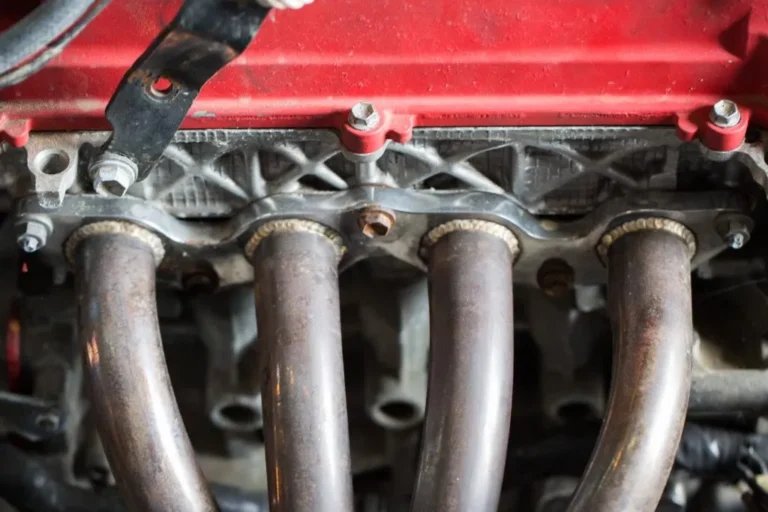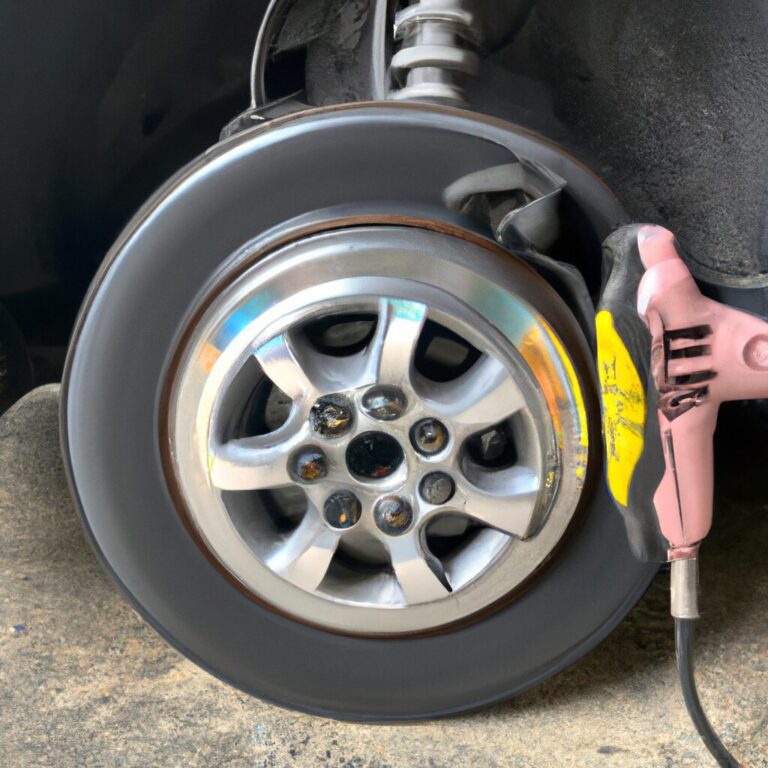Should I Open Brake Fluid Reservoir When Changing Brakes
No, you should not open the brake fluid reservoir when changing brakes to avoid air contamination. When changing brakes, it’s crucial to maintain the integrity of the brake system by not introducing contaminants like air.
Opening the brake fluid reservoir can lead to air infiltration, causing issues with brake performance. Additionally, it can compromise the braking system’s efficiency and safety. Therefore, it’s best to keep the reservoir closed during brake replacement to ensure optimal brake function and safety on the road.
By following this practice, you can help maintain the effectiveness and reliability of your vehicle’s braking system, enhancing overall driving safety and performance.
Safety Precautions
It is not recommended to open the brake fluid reservoir when changing brakes as it can lead to air getting into the brake lines, compromising safety. To avoid potential issues, it is best to consult a professional or refer to the vehicle’s manual for proper safety precautions.
Importance Of Brake Fluid
Brake fluid is a vital component of your vehicle’s braking system, responsible for transmitting the force applied to the brake pedal to the actual brakes on the wheels. It plays a crucial role in ensuring safe and efficient braking performance. Brake fluid also helps prevent corrosion within the braking system, extending its lifespan and reducing maintenance costs.
Risks Of Opening Reservoir
Opening the brake fluid reservoir when changing brakes can introduce several risks that compromise your safety and the performance of your braking system:
- Contamination: Brake fluid is hygroscopic, meaning it readily absorbs moisture from the air. By opening the reservoir, you expose the fluid to ambient air, increasing the likelihood of contamination. Moisture in the brake fluid can lead to the formation of rust or other corrosive elements within the braking system, potentially impairing its functionality.
- Air Introduction: Opening the reservoir can introduce air bubbles into the system, causing a phenomenon known as brake fluid aeration. Air bubbles reduce the hydraulic pressure within the brake lines, resulting in a spongy brake pedal and diminished braking efficiency. This can compromise your ability to stop the vehicle safely, especially in emergency situations.
- Fluid Loss: Opening the reservoir increases the risk of spilling or inadvertently draining the brake fluid. Losing brake fluid can lead to insufficient fluid levels in the braking system, causing the brakes to fail altogether. This is extremely dangerous and could result in a loss of control while driving.
Therefore, it’s recommended to avoid opening the brake fluid reservoir when changing brakes. Instead, follow the appropriate brake bleeding procedures specific to your vehicle to ensure safety and optimal braking performance.

Credit: www.motorcyclenews.com
Impact On Brake System
Impact on Brake System:
Affecting Hydraulic System
Opening the brake fluid reservoir while changing brakes can lead to contaminating the hydraulic system, affecting brake performance.
Introducing Air Into The System
Accidentally introducing air into the brake system while opening the reservoir can cause spongy brakes and reduced braking efficiency.
Best Practices
Before changing your brakes, ensure to follow these best practices to ensure a smooth and successful process.
Bleeding The Brakes
Before opening the brake fluid reservoir when changing brakes, it’s important to bleed the brakes to remove any air bubbles and maintain brake performance.
Consulting The Owner’s Manual
Refer to your vehicle’s owner’s manual for specific instructions on brake fluid reservoir access and proper procedures for changing brakes.

Credit: www.universaltoyota.com
Professional Advice
When it comes to changing brakes, one of the questions that often arises is whether it’s necessary to open the brake fluid reservoir. As a responsible car owner, you want to ensure that you are taking all the necessary precautions and following the correct procedures. To help answer this question, we sought professional advice from mechanics and explored the manufacturer recommendations.
Mechanic’s Perspective
Mechanics, who deal with brake systems on a daily basis, have a wealth of experience and knowledge when it comes to brake maintenance. According to these experts, opening the brake fluid reservoir is not a mandatory step in the brake changing process. However, it is strongly recommended to check the level of the brake fluid before performing any brake work.
Here are a few reasons why mechanics suggest checking the brake fluid level:
- Preventing overflow: As you push the brake piston back into the caliper when changing the brake pads, it can cause the brake fluid level to rise in the reservoir. If the fluid is already at the maximum mark, it may overflow, resulting in a messy and potentially dangerous situation.
- Identifying potential issues: Brake fluid is hygroscopic, meaning it absorbs moisture over time. This can lead to a decrease in performance and potential brake system issues. By regularly checking the brake fluid level, you can spot potential problems early on and address them before they worsen.
Remember, if you do need to top-up the brake fluid, always use the recommended fluid specified by the manufacturer.
Manufacturer Recommendations
When it comes to brake maintenance, it’s important to consider the recommendations provided by the manufacturer. These guidelines are designed to ensure the optimal performance and longevity of the braking system. So what do the manufacturers have to say about opening the brake fluid reservoir?
While the information may vary depending on the specific vehicle make and model, most manufacturers advise against opening the reservoir unless absolutely necessary. This is primarily due to the risk of introducing air or contaminants into the brake system, which can compromise its function and safety.
The manufacturer’s recommendations often include steps to bleed the brakes if air has entered the system or to perform a complete brake fluid flush as part of routine maintenance. These procedures should be followed with utmost care to maintain the integrity of the braking system.
In conclusion, when changing brakes, it is generally not required to open the brake fluid reservoir. However, it is considered good practice to check the fluid level beforehand to prevent overflow and identify potential issues. It’s crucial to adhere to the manufacturer’s recommendations and take necessary precautions during the procedure to ensure the safety and functionality of your vehicle’s braking system.
Diy Considerations
When it comes to changing brakes on your own, there are a few DIY considerations to take into account before opening the brake fluid reservoir. Let’s explore the level of experience and necessary tools required for a successful brake change.
Level Of Experience
Before diving into the brake fluid reservoir, it’s essential to assess your level of experience. This task requires a basic understanding of car mechanics and the ability to follow precise instructions. If you’re new to DIY car maintenance, it’s advisable to seek guidance from a professional or experienced individual.
Necessary Tools
When considering whether to open the brake fluid reservoir, it’s crucial to have the necessary tools at hand. These may include a jack and jack stands, lug wrench, C-clamp or brake caliper tool, and a wrench set. Additionally, be sure to have safety equipment such as gloves and safety goggles to protect yourself during the brake replacement process.
Credit: www.quora.com
Frequently Asked Questions For Should I Open Brake Fluid Reservoir When Changing Brakes
Is It Necessary To Open The Brake Fluid Reservoir When Changing Brakes?
Removing the brake fluid reservoir cap can provide an escape route for the fluid displaced by the new pads. This makes compressing the caliper piston much easier.
What Happens If I Don’t Open The Brake Fluid Reservoir?
Leaving the brake fluid reservoir closed can cause pressure to build up as you push the caliper piston back. This might lead to damage in the brake system.
Can I Add Brake Fluid Without Opening The Reservoir?
You can add brake fluid without removing the reservoir cap, but when compressing the caliper piston, it’s better to remove the cap to release pressure.
Should I Check The Brake Fluid Level Before Opening The Reservoir?
It’s important to check the brake fluid level before opening the reservoir, as adding fluid can cause overflow if it’s already filled to the brim.
What Type Of Brake Fluid Should I Use For Topping Up?
Always use the brake fluid recommended in your vehicle’s manual. Using the wrong type of fluid can lead to brake failure and safety hazards.
How Often Should The Brake Fluid Be Checked And Topped Up?
It’s advisable to check the brake fluid level with every oil change and top up if necessary. Regular maintenance can prevent brake system issues.
Can Opening The Reservoir Cause Air Bubbles In The Brake System?
Opening the reservoir, if done properly, won’t introduce air bubbles. It can actually facilitate easier brake pad replacement and caliper piston compression.
Conclusion
It is not necessary to open the brake fluid reservoir when changing brakes. However, it is important to be cautious and ensure that the reservoir is properly sealed to prevent any contamination. Remember to follow the manufacturer’s guidelines and consult a professional if you are unsure about any step of the process.
Keeping these precautions in mind will help ensure a smooth and safe brake replacement.


